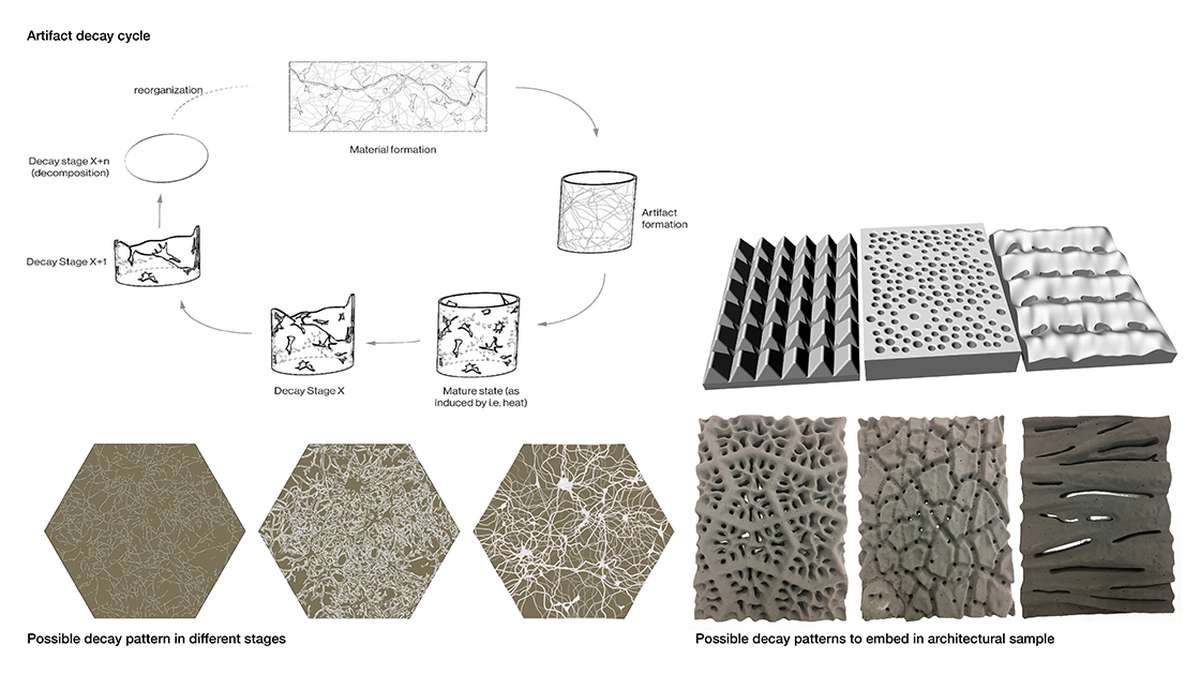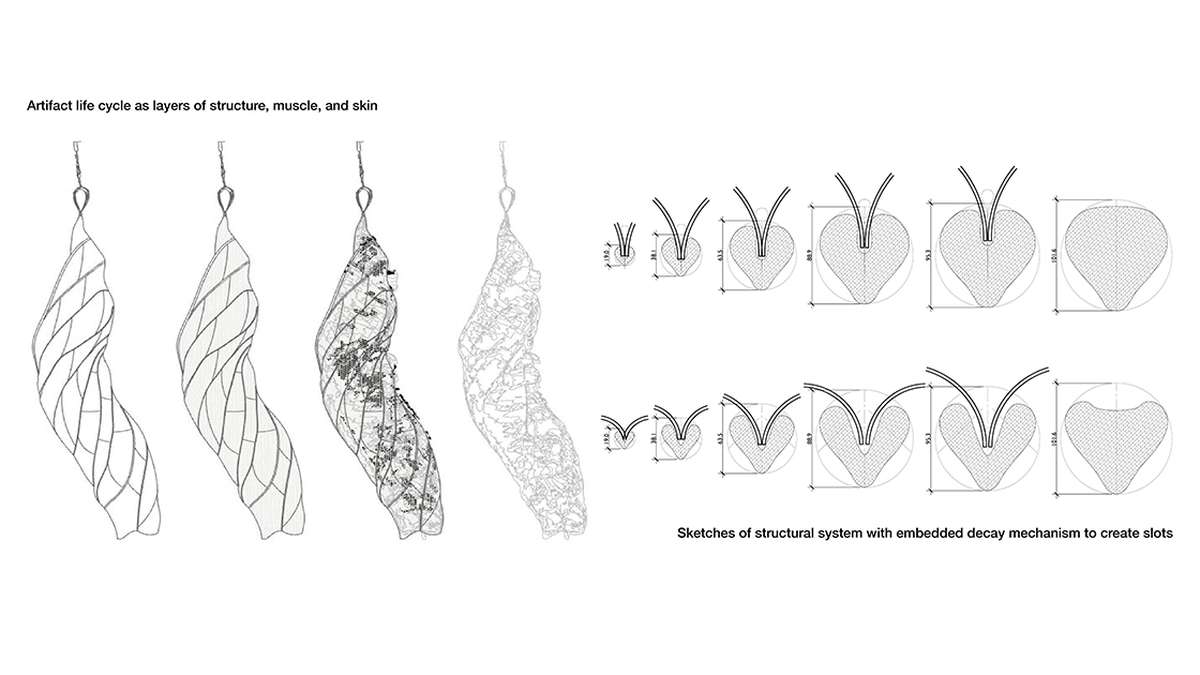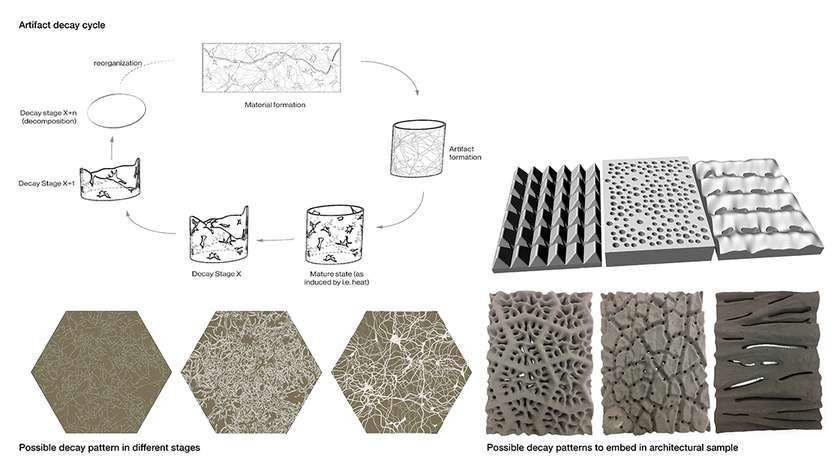Idea by
Andrea Ling
Call for ideas 2020
Design by Decay, Decay by Design
Design by Decay, Decay by Design

- Systemic changes
My image is of a rock painting that is ~70000 years old. The painting remains vibrant because symbiotic red cyanobacteria and black fungi have consumed the original pigment and colonized the original drawing, rendering the image in living pigment and lending durability not possible with man-made pigment. This is a model of what architecture could be if it leveraged biology’s power to adapt, repair, and replicate in its process, creating longevity and firmitas out of responsivity and renewal. In biology, one system’s entropy is another system’s organization. For my project I wish to harness biological degradation as a fabrication process and develop a series of architectural prototypes that exhibit designed decay, such that it is not only destructive but also transformative, and that the altered prototype gains new desirability with the decay process. It points to an alternative design practice where the process of making and breaking things is provisional as well as consumptive.

Prototype Life Cycle Diagram with potential decay patterns

Prototype Life Cycle diagram with potential structural decay embedded
Design by Decay, Decay by Design
Design by Decay, Decay by Design

- Systemic changes
My image is of a rock painting that is ~70000 years old. The painting remains vibrant because symbiotic red cyanobacteria and black fungi have consumed the original pigment and colonized the original drawing, rendering the image in living pigment and lending durability not possible with man-made pigment. This is a model of what architecture could be if it leveraged biology’s power to adapt, repair, and replicate in its process, creating longevity and firmitas out of responsivity and renewal. In biology, one system’s entropy is another system’s organization. For my project I wish to harness biological degradation as a fabrication process and develop a series of architectural prototypes that exhibit designed decay, such that it is not only destructive but also transformative, and that the altered prototype gains new desirability with the decay process. It points to an alternative design practice where the process of making and breaking things is provisional as well as consumptive.

Prototype Life Cycle Diagram with potential decay patterns

Prototype Life Cycle diagram with potential structural decay embedded